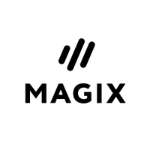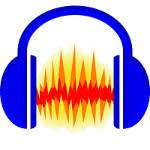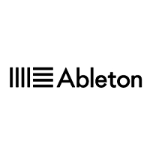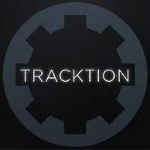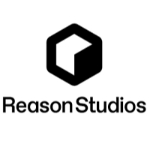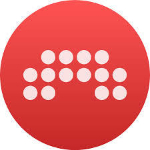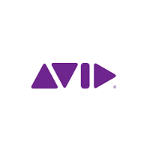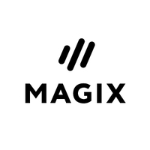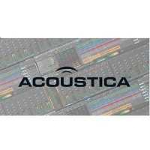TechnologyCounter provides genuine, unbiased real user reviews to help buyers make informed decisions. We may earn a referral fee when you purchase through our links, at no extra cost to you.
List of 15 Best Music Production Software
Showing 1 - 15 of 20 productsLa Touche Musicale is an innovative music software that revolutionizes the way you create and experience music. With its user-friendly interface and seamless integration of technology and art, La Touche Musicale brings music to life like never before...Read La Touche Musicale Reviews
MAGIX Music Maker is a music production software for aspiring musicians and seasoned professionals alike. With a user-friendly interface and a wide range of features, MAGIX Music Maker allows you to bring your musical ideas to life. Create, record, m...Read MAGIX Music Maker Reviews
Audacity is a and user-friendly audio editing software that allows you to record, edit, and mix your audio files with ease. Whether youre a professional musician or a beginner podcaster, Audacity provides all the necessary tools to create high-qualit...Read Audacity Reviews
Ableton is a music production software that empowers creators to bring their musical ideas to life with ease and precision. With its intuitive design and versatile tools, Ableton allows musicians of all levels to craft, record, and perform their musi...Read Ableton Reviews
Cakewalk is a dynamic music production software designed to unlock your creativity and elevate your music to the next level. With its user-friendly interface and powerful tools, Cakewalk makes it easy for musicians, producers, and songwriters to crea...Read Cakewalk Reviews
FL Studio, the ultimate music production software designed for both beginners and professionals alike. With its intuitive interface and powerful tools, FL Studio allows users to create, edit, and mix high-quality music with ease. Elevate your music g...Read FL Studio Reviews
Tracktion Waveform is a digital audio workstation for musicians and producers alike. With its intuitive interface and powerful feature set, Waveform offers a seamless workflow for recording, editing, and mixing music. Get ready to take your sound to...Read Tracktion Waveform Reviews
PreSonus Studio One is a versatile and innovative music production software that empowers musicians, producers, and engineers alike to create, record, mix, and master their music with ease. With intuitive features and a user-friendly interface, Studi...Read PreSonus Studio One Reviews
Cubase is a highly versatile music production software that has been a favorite amongst professional and amateur musicians alike for over 30 years. With its user-friendly interface, advanced features is a tools, Cubase has become a go-to platform for...Read Cubase Reviews
Reason Studios is a music production and sound design software company that has revolutionized the way creators make music. With a team of experts in audio engineering, Reason Studios offers an innovative and user-friendly platform for musicians, pro...Read Reason Studios Reviews
Bitwig Studio is an innovative music production software that offers endless creative possibilities for musicians, producers, and sound designers. With a user-friendly interface, powerful tools, and seamless integration with hardware and plugins, Bit...Read Bitwig Studio Reviews
Avid Pro Tools is the go-to software for musicians, producers, and audio engineers looking to take their recordings to the next level. With a variety of powerful features and tools, this industry-standard DAW (digital audio workstation) offers a seam...Read Avid Pro Tools Reviews
Cockos Reaper is a powerhouse digital audio workstation that delivers unparalleled flexibility, efficiency, and creativity for all your music production needs. With its intuitive interface and wide range of features, Reaper has quickly become a favor...Read Cockos Reaper Reviews
ACID Pro is a music production software that will revolutionize the way you create and edit music. With a powerful interface, ACID Pro allows you to effortlessly create, record, edit, and mix your tracks with professional-level quality. From beginner...Read ACID Pro Reviews
Acoustica Mixcraft is a popular go-to digital audio workstation (DAW) for musicians and music producers of all levels. With its user-friendly interface, extensive library of loops and samples, and powerful editing features, Mixcraft allows for effort...Read Acoustica Mixcraft Reviews
- What Is Music Production Software?
- Top Reasons Why Businesses Need Music Production Software?
- What Are the Top Key Features of Music Production Software?
- What Are the Top Benefits of Music Production Software?
- What Are the Steps to Choose the Right Music Production Software?
- What Are the Types of Music Production Software for Different Industries?
- What Are the Technology Trends for Best Music Production Software?
- What Are the Deployment Options for Music Production Software?
What Is Music Production Software?
Music production software refers to computer software that is utilized to create, record, edit, mix, and master audio recordings, specifically within the realm of music. This software enables users to handle pre-existing audio file recordings, select various sounds and plug-ins, edit these recordings, and subsequently combine and finalize their completed product.
The best music production software is designed for utilization by individuals who possess expertise in the field of music production and audio engineering. This tool is utilized for the creation of musical compositions as well as for diverse recording endeavors. The software packages that are most commonly utilized encompass sequencers, audio processors, MIDI production tools, virtual instruments, and audio recognition software.
Sequencers are utilized in the organization and manipulation of music in a sequential manner, affording users the ability to exert control over factors such as note activation and deactivation, loudness modulation, and more pertinent data. Audio processors are commonly employed for editing, applying effects, utilizing sound optimization techniques, and implementing various supplementary procedures.
MIDI production tools facilitate the generation of intricate and naturalistic auditory experiences through the utilization of virtual instruments. Virtual instruments are utilized to generate sounds through computer-generated means, replicate conventional musical instruments, and produce distinctive auditory experiences.
Good music production software is employed to identify and analyze auditory signals. The target audience for this software comprises professionals and creative artists seeking to produce personalized audio recordings. The utilization of this technology possesses significant potency in animating music and generating distinctive recordings, so imbuing works with a creative dimension.
Top Reasons Why Businesses Need Music Production Software?
1. Music production software facilitates the optimization of audio content creation procedures.
2. The best music production software facilitates the optimization of the audio file creation process.
3. Facilitating the creation of percussion tracks in a manner that exudes professionalism.
4. Music creation software enables users to concurrently record various instruments and afterward blend them.
5. This feature allows users to effortlessly generate smooth transitions between distinct audio portions.
6. The online music production software is a valuable tool that facilitates the efficient allocation of time and effort throughout the audio mixing process.
7. The utilization of virtual instruments and effects has the potential to contribute to the reduction of manufacturing costs.
8. The utilization of a diverse array of audio production technologies can contribute to the attainment of exceptional sound quality.
9. The top music production software facilitates the simplification and enhanced management of intricate compositions.
10. This software enables users to expeditiously generate audio recordings with a professional quality.
11. Professional music production software enhances the auditory quality of audio recordings through the use of various effects, hence augmenting their depth.
12. This technology can generate personalized soundtracks for many media formats such as films, video games, podcasts, and other audio-based products.
13. The utilization of music production software facilitates the process of exporting audio files in a diverse range of formats.
14. The introduction of depth and clarity aids in enhancing the overall audio recording mix.
15. Music creation software enhances the auditory experience by introducing diversity and complexity to audio recordings.
What Are the Top Key Features of Music Production Software?
1. Music Notation: Music notation software commonly has a robust MIDI sequencing tool, facilitating the composition, arrangement, editing, and mixing of music through the utilization of musical notation.
2. Audio Recording and Editing: The best music production software encompasses a range of functionalities, including the provision of audio recording and audio editing tools, which enable users to capture and manipulate audio elements for their musical compositions.
3. Mixing and Mastering: Good music production software offers a diverse range of features and functionalities that facilitate the process of mixing and mastering audio songs. These include automation, equalization, and multi-band compression.
4. Effects and Plugins: The majority of music production software incorporates a comprehensive collection of sophisticated effects and plugins, which empower users to generate distinctive sounds within their configurations.
5. Automation: The top Music production software frequently can automate many parameters and processes, hence enabling the construction of intricate and refined musical compositions.
6. Virtual Instruments: The majority of music production software incorporates a collection of virtual instruments, which afford users the ability to compose, blend, and generate music utilizing simulated sound sources.
7. Sampling: Numerous music production software packages incorporate sophisticated sampling features, enabling users to construct personalized samples for their compositions.
8. Metronome: Music production software frequently includes an integrated metronome, which serves to furnish a rhythmic accompaniment for accurately recording the various components of your musical composition.
What Are the Top Benefits of Music Production Software?
The top benefits of music production software include:
1. Increased productivity: The top Music production software can automate various labor-intensive tasks that were previously performed manually, including mixing, mastering, and effect generation. This automation enables producers to enhance their productivity and efficiency in the production process.
2. Improved sound quality: The best music production software offers creators a range of digital tools and plug-ins that enable them to modify and augment the auditory characteristics of their musical compositions.
3. Creative freedom: Music creation software offers creators the opportunity to explore creative possibilities that might otherwise be unattainable using conventional analog instruments and recording apparatus.
4. Total control: Music production software empowers producers with comprehensive command over the auditory aspects and operational processes of their productions, encompassing tasks such as mastering, mixing, editing, and sequencing.
5. Affordability: The most popular music production software is frequently priced at a lower rate compared to conventional analog recording equipment, enabling producers to achieve comparable production quality while incurring significantly reduced expenses.
6. Accessibility: Music creation software is commonly accessible through downloadable platforms, hence facilitating immediate availability and enhancing the flexibility of music creators during the creative process.
7. Simplicity: The field of music production has been enhanced by the development of user-friendly interfaces and increased accessibility to a diverse array of sounds.
What Are the Steps to Choose the Right Music Production Software?
1. Conduct a comprehensive investigation into the many categories of music production software in order to determine the most suitable option for your specific requirements. Several widely used software alternatives in the field include Cubase, Logic, Pro Tools, Ableton, and FL Studio.
2. Take into account your financial constraints and search for a software package that is compatible with your budget. In general, the acquisition of a software suite tends to incur higher costs compared to the purchase of separate software components.
3. Conduct a comparative analysis of the characteristics exhibited by several software packages to determine the most suitable option that aligns with your requirements. It is imperative to direct one's focus toward the interface, plugins, instruments, and sound creation possibilities inherent in each system.
4. Search for packages that provide customer service that aligns with your preferences. Verify if there exist instructional tutorials or virtual discussion platforms that can assist in facilitating familiarity and proficiency with the software.
5. It is advisable to peruse customer evaluations to gain insights into the experiences of other users with the product. This can be of great value in facilitating the decision-making process.
6. If feasible, it is recommended to conduct a personal evaluation of the software to gain a more comprehensive understanding of its functionality. Many software vendors provide trial versions of their applications to facilitate this process.
What Are the Types of Music Production Software for Different Industries?
Various industries have access to a range of music production software options, which commonly encompass digital audio workstations, software samplers, loop-based production software, and scoring software. Digital audio workstations (DAWs) refer to software applications that are utilized to record and manipulate audio.
Good music production software provides a range of functionalities including multitrack recording, MIDI sequencing, virtual instrument integration, audio effects processing, and additional capabilities. Prominent digital audio workstations (DAWs) encompass Avid Pro Tools, Apple Logic Pro, Steinberg Cubase, and Ableton Live. Software samplers enable musicians to generate virtual instruments by utilizing audio samples.
Commonly found in these types of software are several functionalities, including but not limited to multisampling, resampling, and looping. Two well-known examples of samplers are Kontakt, developed by Native Instruments, and Alchemy, developed by Camel Audio. Loop-based production software enables musicians to efficiently construct music by utilizing loops or repetitions of recorded audio segments.
Prominent software applications commonly utilized in the field encompass Apple GarageBand, Ableton Live, Propellerhead Reason, and Cakewalk Sonar. In conclusion, the utilization of scoring software facilitates the expeditious creation of musical scores by composers.
Typically, these apps encompass functionalities such as MIDI sequencing, virtual instruments, and notation software. Prominent scoring applications encompass Sibelius and Finale.
What Are the Technology Trends for Best Music Production Software?
The progression of music production software has witnessed a transformative shift from rudimentary recording consoles to sophisticated digital workstations.
The past few years have seen several advancements in this area, and the following trends are currently leading the industry:
1. Cloud-Based Software: Cloud-based software enables producers to conveniently access their projects from a wide range of devices and engage in collaborative efforts with fellow musicians. This obviates the necessity for costly tangible apparatus and enables teams to collaborate remotely from any location.
2. Digital Workstations: The utilization of digital workstations has experienced a notable rise in popularity among producers due to their capacity to perform concurrent recording, mixing, and mastering tasks. This enables producers to efficiently generate recordings of superior quality without the need for investing in several software applications.
3. Audio Plugins: Audio plugins offer producers a convenient means of incorporating sounds, effects, and additional components into their work. This capability enables a producer to expeditiously include intricacy and profundity into their productions with less exertion.
4. Real-Time Audio Processing: The utilization of real-time audio processing technology facilitates the ability of producers to make timely modifications to various auditory components, including sounds, effects, and elements, inside a given project. This capability leads to enhanced efficiency and expeditiousness in the production process.
5. High-Resolution Audio: The use of high-resolution audio has experienced a notable surge in popularity within the music production industry. The utilization of high-resolution audio enables producers to generate recordings characterized by enhanced clarity, hence facilitating the capturing of intricate subtleties and details within their musical compositions.
In general, the best music production software demonstrates a persistent inclination towards innovation and evolution on an annual basis. The music production landscape is being significantly influenced by several noteworthy trends, including cloud-based software, digital workstations, audio plugins, real-time audio processing, and high-resolution audio.
What Are the Deployment Options for Music Production Software?
There exist three primary deployment alternatives for music production software, namely on-premise, cloud-based, and hybrid. The best music production software that is installed and operated only on the user's local system is referred to as on-premise software.
This particular choice often necessitates a larger store capacity and advanced computer gear, although it provides enhanced control and stability. Cloud-based good music production software refers to software that is hosted on remote servers, allowing users to access and utilize the software without the need for it to be installed on their local systems.
This alternative is deemed to be more dependable and obviates the necessity for users to get or uphold costly gear. Hybrid top music production software refers to a software solution that integrates both on-premise and cloud-based components.
This technology enables customers to leverage cloud computing capabilities while simultaneously reaping the advantages of on-premise software.

